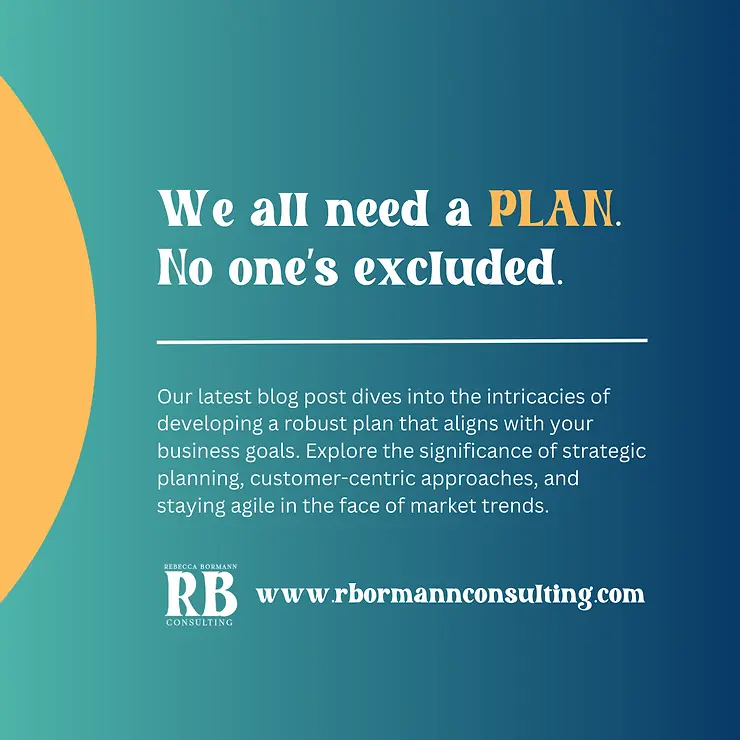

What are your sales and business growth goals? Do you have a plan to guide you to achieve those goals? As we kick off the new year these are great reflection questions to consider and help determine your path to achieve your 2024 goals.
Every organization is unique, and there's no one-size-fits-all approach to business development. However, one thing that I know for sure is that whether you're a solopreneur, sales professional at an enterprise organization or fundraising for a nonprofit, taking the time to develop a well defined business development strategy leveraging proven best practices is key to achieving sales and revenue growth goals.
Getting started can be a daunting task, which is why I'm excited to lighten your load and provide you with a set of tried-and-true business development strategies. Use this framework to serve as your guide to craft your business development strategy. Then implement your plan to accelerate your sales and exceed your goals.
Let’s get started!
The goal of a business development strategy is to help an organization grow and expand by identifying and pursuing new opportunities, markets, and strategies to increase revenue, profitability, and market share. It serves as a roadmap for achieving objectives and should include several key components.
Before we get ahead of ourselves, let’s take a step back and define our business development goals and then we can develop our strategy accordingly.
Start with Crystal-Clear Goals
This is your friendly reminder to use the S.M.A.R.T. goals format. What are your business development goals for 2024? Your goals should be precisely defined and have measurable objectives. What do you aspire to achieve? Be it revenue augmentation, market expansion, or venturing into new territories, your targets should be specific, attainable, and time-constrained.
Keep Your Clients Top of Mind
Sales and business development are about people. It’s about building relationships and connecting with people who have a want or a need that you can fulfill with your products or services. Our sales approach intertwines emotional intelligence (EQ) with strategy, enabling us to provide top-notch sales consulting and training services that are not just strategy-oriented but also people-focused. If you missed our blog earlier this month about the importance of emotional intelligence in sales strategy check it out here.
Let's talk Business Development Strategy Framework!
Market Analysis: Understanding the current market landscape is essential for making informed decisions. Assess the current market conditions, trends, and potential opportunities for growth.
Here are some tips for conducting a comprehensive market analysis:
Target Client Identification: Identify ideal clients or client segments that align with the company's products or services.
Competitive Analysis: Evaluating competitors and their strengths and weaknesses to develop your competitive advantage and Unique Selling Proposition (USP). What is often missed in a competitive analysis is to also look for opportunities to join forces and collaborate with your competitors. Look for opportunities that expand both of your portfolio of offerings allowing you to offer new solutions to existing clients as well as attract new clients.
Pricing Considerations: Pricing is a crucial element of a company's overall business development strategy, as it directly affects revenue, profitability, and market positioning. It should be reviewed on at least an annual basis.
Tips to consider when evaluating your pricing:
Sales Process: Sales framework that can be adapted to individual buyer journeys. A well-structured sales process can significantly impact your conversion rates.
Here's what you should focus on:
Marketing Recommendations: The goal is to invite ideal clients to be curious and engage with your organization. Marketing and Sales processes should be aligned to maximize results for both efforts.
Effective marketing is pivotal for business development. Consider these recommendations:
Partnerships and Alliances: Explore partnerships, collaborations, or strategic alliances that can help expand the business.
Strategic partnerships can open doors to new opportunities. Follow these steps:
Geographic Expansion: While this is not a decision to be made lightly, consider expansion into new geographic regions or markets.
Here’s how to approach it:
Additional Lead Gen Strategies: The primary goal of lead generation is to build a list of individuals or businesses who can be nurtured and eventually converted into paying clients. Lead generation is the lifeblood of business development. Are you prioritizing lead gen activities? If not, consider time blocking or other time management best practices to make sure lead gen doesn't stay on the bottom of the list.
Consider these lead generation strategies:
Metrics and Key Performance Indicators (KPIs): Establishing measurable goals and tracking progress to gauge the success of the business development plan as well as continually improve your strategy.
Risk Management: Identifying potential risks and developing strategies to mitigate them is an important and often time overlooked aspect of a business development strategy.
Here's how to get started:
For example: Clear articulation of your company’s story with the WHY in mind and USP in external & internal communications can mitigate the risk of market saturation.
To potentially mitigate economic uncertainty, stay abreast of industry trends and focus on ideal clients not affected (or as greatly affected) by economic downturns or budget cuts. Be willing to adapt offerings to meet market demands.
This business development strategy framework has served us and our clients well. Remember that a business development strategy is an ongoing process that requires adaptability and a commitment to continuous improvement.
By focusing on people, intentionally building relationships and implementing proven strategies we can all thrive in sales and growing our businesses!
There is more than enough,
Rebecca

More about RB Consulting:
Looking for a partner to help create and execute your business development strategy?
Let’s chat! Schedule your complimentary consultation call today: https://calendly.com/rbbizdevconsulting/rb-consulting-introductory-consultation-meeting
Upcoming Cohorts & Workshops
If learning more about business development strategies and leveling up your sales skills is an area you are looking to invest in for professional and personal development, check out our 2024 Sales Training Cohorts.
We have 3 options for you to attend this year and enrollment is open for all three right now.
Sales Cohort | Rebecca Bormann Consulting (rbormannconsulting.com)
